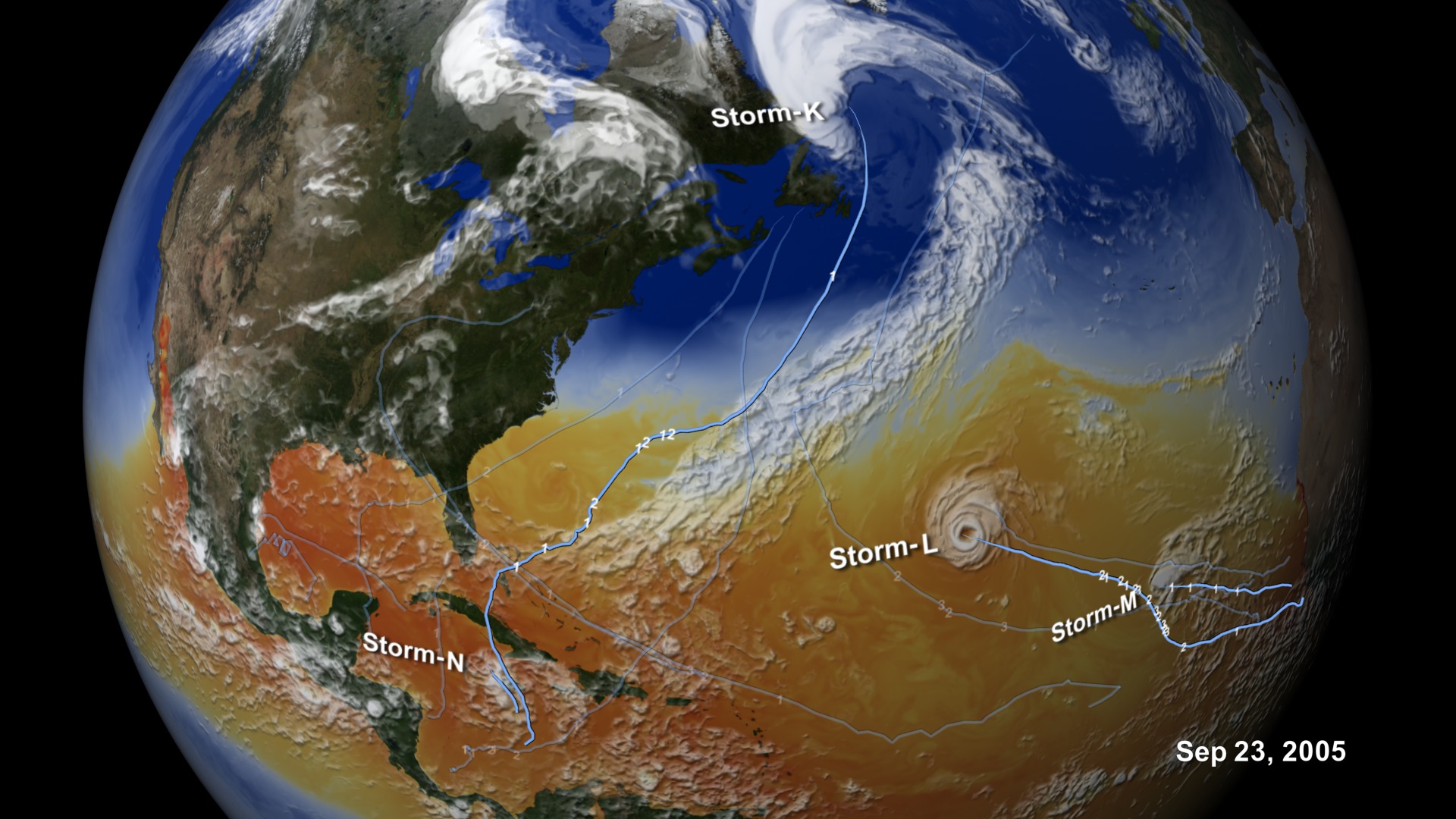Simulated Nature Runs Its Course
The 2005 Atlantic hurricane season smashed records with 28 named storms, four Category 5 hurricanes (including Wilma, the all-time strongest), and the costliest U.S. natural disaster (Katrina). A NASA Goddard climate model called GEOS-5 revisited the season as part of a gigantic two-year simulation to better understand the processes of weather and climate. Seeded with observed sea surface temperatures—a key driver of hurricane formation—the model simulated weather events worldwide. One of the highest resolutions to date for a full-Earth model was used to run the simulation, taxing Goddard's Discover supercomputer for weeks. In total, the model spawned 23 Atlantic hurricanes and tropical storms during 2005—an impressive comparison to the actual number observed—and demonstrated an increased ability to model how these volatile cyclones change intensity as they evolve. The visualization shows simulated storms for September 2005 emerging and churning across the North Atlantic.

A NASA climate model re-created an extraordinary season of storms.
Numbers shown along the storm tracks indicate the hurricane category rating on a scale of 1-5 based on intensity, with 5 being the strongest.

High resolution allows the model to produce major hurricanes, Category 3 and above. Storm-D reached Category 4 status just before making landfall.

Like their real-world counterparts, simulated storms span the Atlantic—from Africa's Cape Verde to the Gulf of Mexico.

Of the 23 simulated storms, 16 were hurricanes (vs. 15 observed) and six were major hurricanes (vs. seven observed).

Satellite observations show the actual tracks of all 27 storms observed in 2005. Later analysis revealed a 28th.

Hurricane Rita makes its way toward the Texas coast in Sep. 2005, as seen from the International Space Station.
Credits
Please give credit for this item to:
NASA's Goddard Space Flight Center and NASA Center for Climate Simulation (NCCS)
Hurricane photo from ISS courtesy of NASA Johnson Space Center
-
Animators
- Alex Kekesi (Global Science and Technology, Inc.)
- Greg Shirah (NASA/GSFC)
-
Scientist
- William Putman (NASA/GSFC)
-
Writer
- Jarrett Cohen (Global Science and Technology, Inc.)
Release date
This page was originally published on Tuesday, July 31, 2012.
This page was last updated on Wednesday, May 3, 2023 at 1:52 PM EDT.
Datasets used
-
GEOS-5 Cubed-Sphere (GEOS-5 Atmospheric Model on the Cubed-Sphere)
ID: 663The model is the GEOS-5 atmospheric model on the cubed-sphere, run at 14-km global resolution for 30-days. GEOS-5 is described here http://gmao.gsfc.nasa.gov/systems/geos5/ and the cubed-sphere work is described here http://sivo.gsfc.nasa.gov/cubedsphere_overview.html.
See all pages that use this dataset
Note: While we identify the data sets used on this page, we do not store any further details, nor the data sets themselves on our site.

